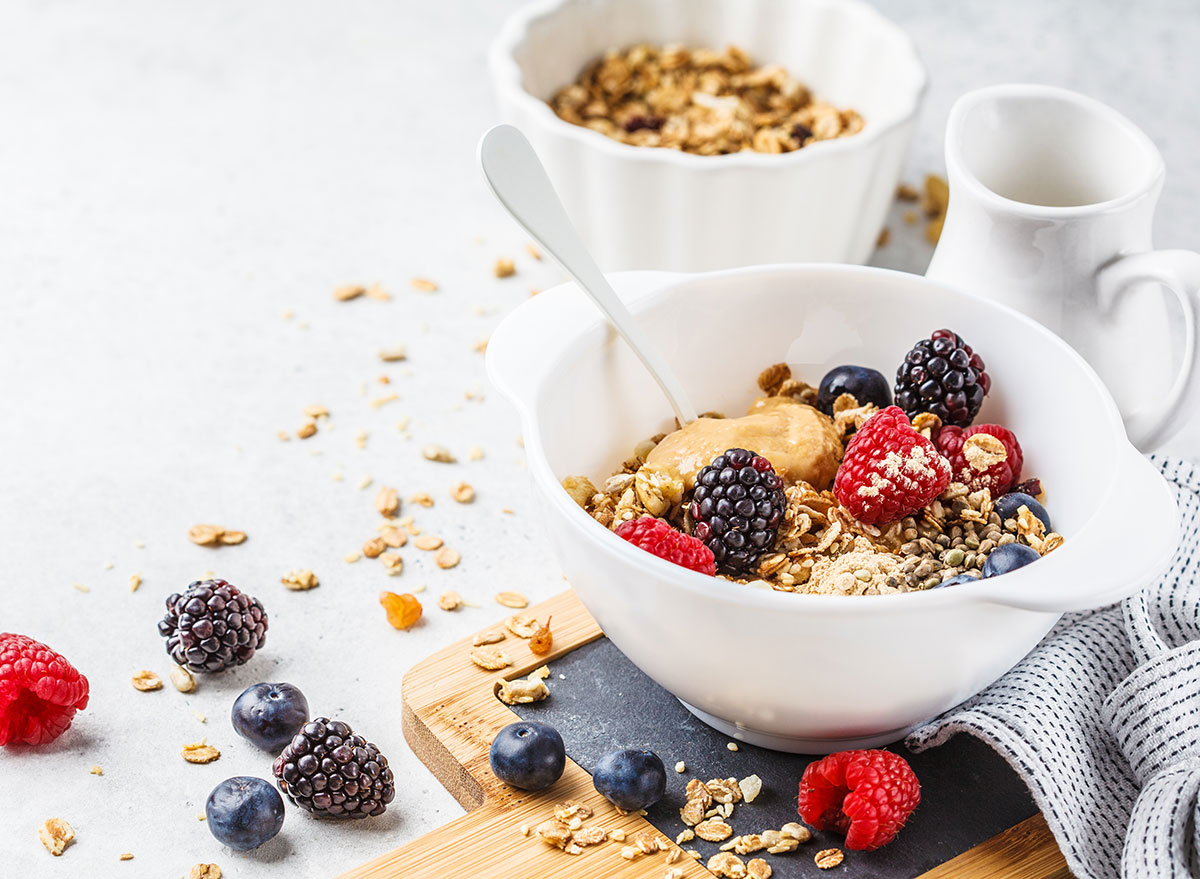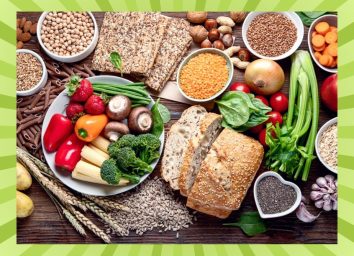The One Thing To Eat To Get Rid Of Belly Fat, Says Dietitian

There are so many misconceptions about how to lose weight—particularly when it comes to stubborn belly fat. And many of the tips to get rid of belly fat claim to be "quick fixes" are straight-up myths… and can even be super dangerous (like swallowing cotton balls). What?!
One pervasive myth is that you can target exactly where to lose weight. Unfortunately, the body doesn't really work that way, though some studies point to things—such as heavy alcohol consumption—that seem to add fat to the abdomen.
That said, there is one thing that's key to helping you get rid of belly fat and helps keep you trim: Fiber.
This nutrient is essential for keeping your digestion moving, but according to the USDA, most Americans are not getting enough fiber by a long shot. For women, that means 25 grams of fiber per day, and for men 38 grams, according to the Dietary Guidelines for Americans. To put that into perspective, a whole avocado has roughly 10 grams of fiber and one cup of oats has 8 grams.
Related: 15 Underrated Weight Loss Tips That Actually Work
How fiber can help with weight loss

Fiber falls into two main categories—soluble and insoluble. Soluble fiber absorbs water, forming a kind of gel that slows down food as it moves through your digestive system and has a variety of benefits for your metabolism. Insoluble fiber passes through the digestive system largely intact because we lack the digestive enzymes to break it down.
When you eat high-fiber foods, they fill you up and keep you full for longer, which can help with weight loss and maintenance. Plus, fiber helps provide bulk to your stool, speeding up the passage of food through your gut.
"When you digest food, your body expends calories," Tanya Zuckerbrot, MS, RD, and founder of the F Factor Diet told Eat This, Not That!. "Fiber is indigestible, fiber has no calories, but your body attempts to break it down. That attempt is called thermogenesis—a process that increases the body's internal temperature, revving up your metabolism. The more fiber you eat, the faster your metabolism gets," says Zuckerbot.
Fiber can also help remove toxins in the body. Think of fiber like a sponge in your stomach and intestines, says Zuckerbot. "It combines with cholesterol and estrogen and toxins and ushers them out of the body."
The same thing goes for fats and calories. Fiber binds to a portion of the calories and fat you digest, helping to move them through the body.
"So rather than 100% of those calories and fat entering into your bloodstream where they can ultimately land at your thighs and your hips and your belly, a percent of those calories can combine with the fiber—which can not be digested because it gets evacuated—and those calories and grams of fat end up in the toilet bowl," says Zuckerbot.
However, not all fiber is equal. Make sure to focus on fiber from natural sources—like veggies, fruits, legumes, and whole grains. Steer clear of these fiber-rich foods that won't help your waistline.
Stay up to date on the latest healthy eating tips by subscribing to our newsletter, and for more, read these next:








